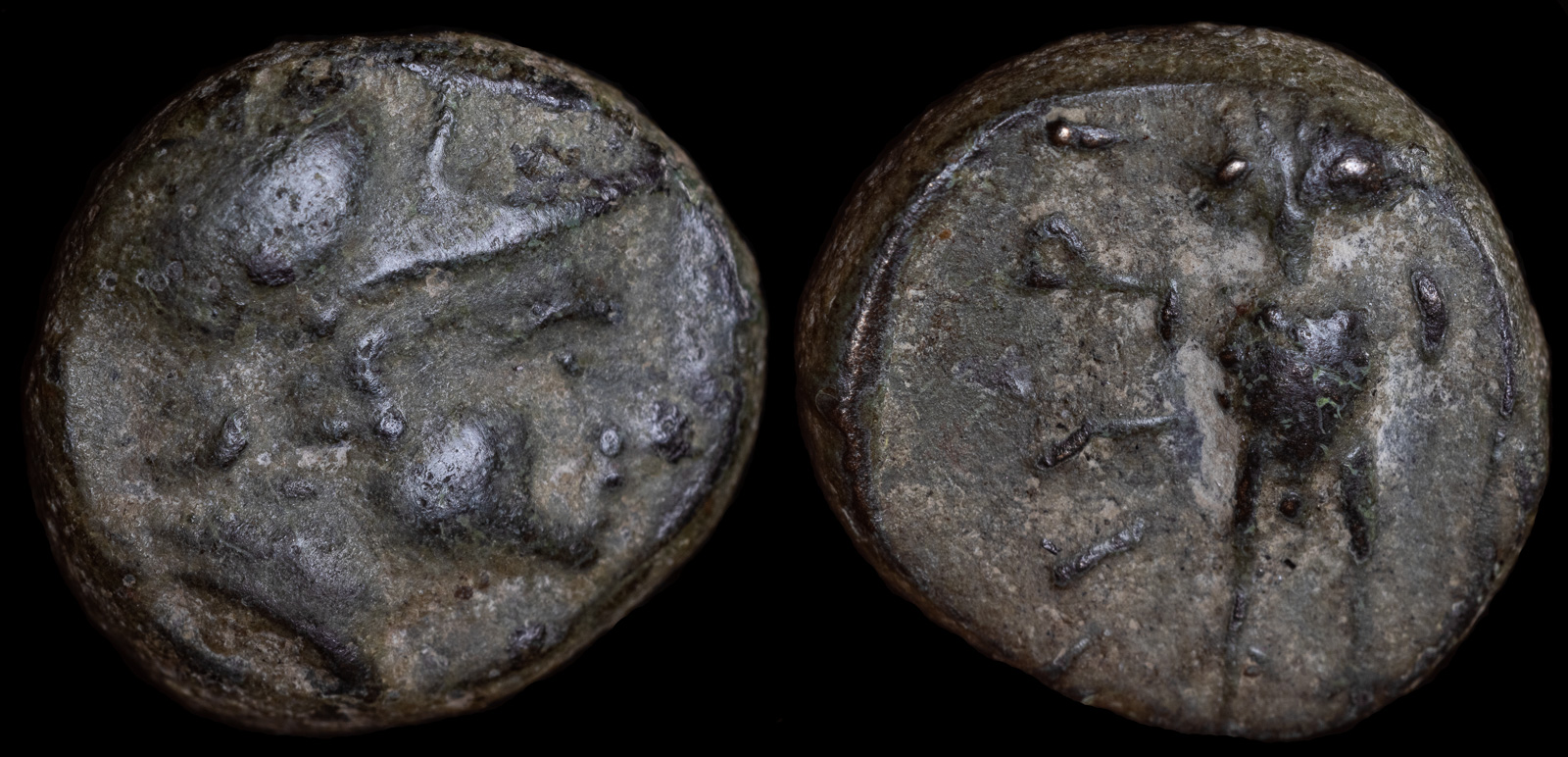
Islands off Thrace, Lemnos, Myrina
Circa 386-261 BCE
Æ 2.41g, 11mm, 12h
Head of Athena to right, wearing Corinthian helmet
MYPI, owl standing facing, [bow to right?]
SNG Copenhagen 989; CN Type 19860; HGC 6, 299
The island of Lemnos has a fascinating history. Though it is only slightly larger than Malta, it contained not one but two ancient mints. However, even more fascinating is its history.
Ancient mythology places it as the forge of Hephaistos, from whom its capital Hephaistia was named. The entire island was sacred to him so that the inhabitants could corner the market on Hephaistos souvenirs. I’m sure there were Hephaistos cups, bowls, key chains, and action figures. Legend has it he fell here when Zeus threw him out of Olympus. But, supposedly there was an active volcano (no longer active) where he could work, so all was good.
Even more mysterious were the ancient inhabitants of the island. The following is what we have.
Supposedly, one time the men on the island were looking a bit too fondly on Thracian women. The local women, upset at being ignored, killed every single man on the island. When Jason and the Argonauts arrived, they found the island ruled by women. From their offspring emerged the ancient Minyans, who supported the Greeks at Troy.
-Further archeological evidence suggests that the people were related to the Mycenaeans.
-Even more curious, a stele was found in Hephaistia with inscriptions in a language now labeled as Lemnian. -Linguistic analysis has suggested that it was related to Etruscan and is now placed in the same language group. It certainly is curious how this could happen, as they aren’t exactly near each other.
Eventually, the entire island fell under the control of Athens, which is clear from both coins. Supposedly, the Lemnians promised their island to the Athenians if they could reach it by sail in less than nine days. In roughly 500 BCE, the Athenians accomplished this and Hephaistia surrendered. Myrina, however, wasn’t so easily convinced. They disputed the call and requested an instant replay and video footage. When the Athenians replied that such things wouldn’t be invented for another 2500 years, the Myrinans stated they would be happy to wait. So, Athens sent the referee along with a bevy of ships and soldiers, and after a siege, Myrina was convinced and the game ruled in Athens’ favor.
The coins of neither mint are easy to come by, but those of Hephaistia, which was larger and more important, are definitely more common.
Otanes, satrap of Phrygia, captures Antandros, Lamponeia, Imbros, Kalchedon, and Hephaistia and Myrina on Lemnos.
The Battle of Sphacteria between Athens and Sparta is fought at the entrance to the Bay of Pylos, resulting in an Athenian victory. Ainos, Imbros, and the cities of Lemnos (Myrina, Hephaistia) provide support.
Eresos, Byzantion, Chios,Mytilene, Methymna, Rhodes, Thebes, Korkyra, Eretria, Kios, Samos, Naxos, Andros, Myrina (Lembos), Hephaistia, Imbros, and Thasos join the Second Athenian League, reaffirming its alliance with Athens in response to the growing threat of Persian interference and internal Greek conflicts.
355 BCE